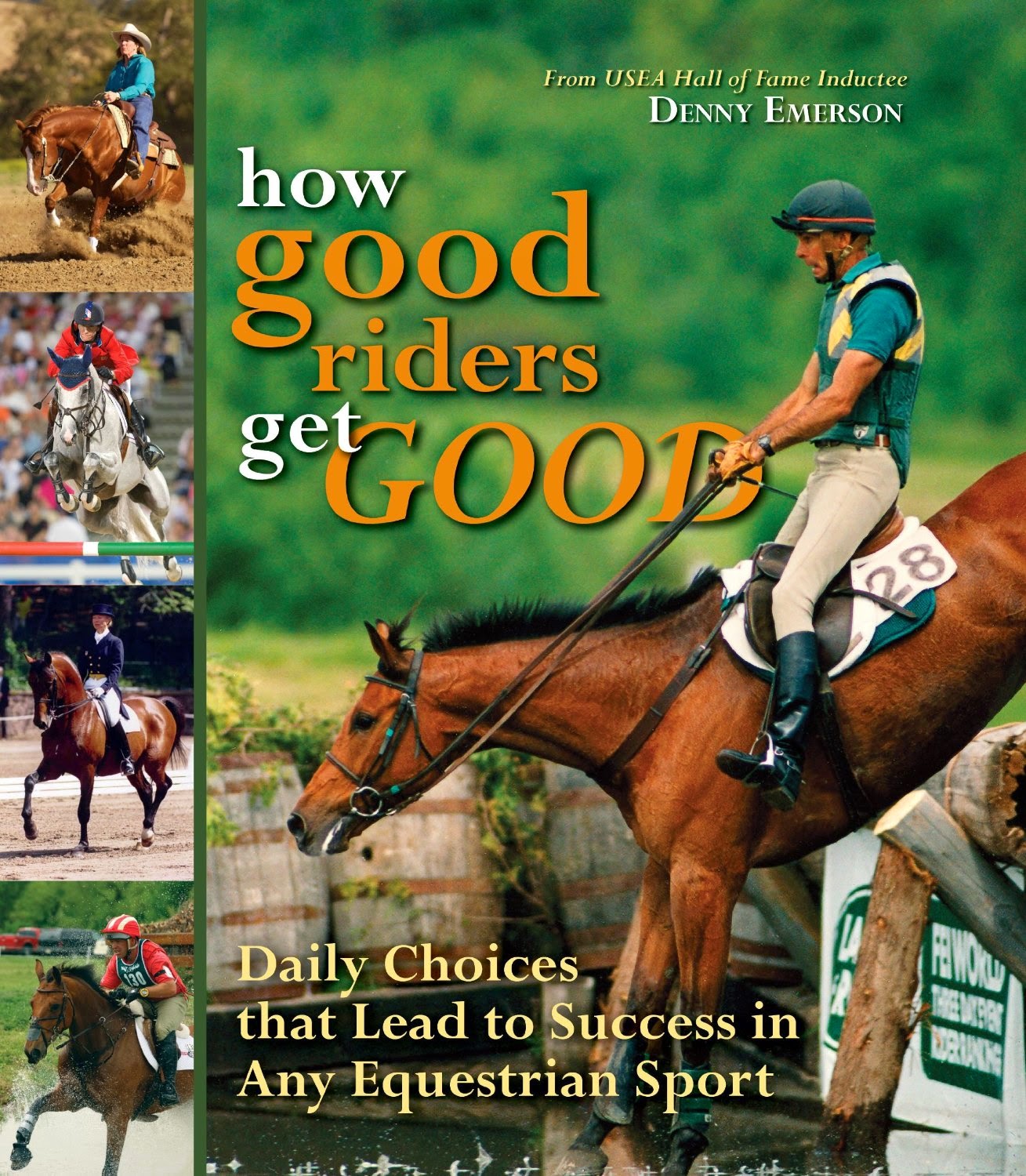No matter how much time you're able to spend in the saddle, there is always more to learn. All equestrians can benefit from supplementing their lesson instruction with books written by successful riders and trainers.
So, just in time for the holidays, here is my list of five books IEA riders should be reading.
1. Hunter Seat Equitation by George H. Morris
Could any equestrian book collection not include this definitive volume by the master horseman himself? In this timeless classic, Mr. Morris describes rider position and aides on the flat and over fences, lateral and longitudinal flexion in the horse, proper horse and rider turnout, and the fundamentals of horse showing, all with the frankness and attention to detail that you would expect. A must-read for every aspiring equestrian.
Once you've read the book, I encourage you to sign up for one of his clinics. I guarantee you will come away from the experience a stronger, and more humble, equestrian.
2. Centered Riding by Sally Swift
Ms. Swift's book teaches riders how to work in harmony with their horses using yoga-like techniques such as breathing, balance, and body awareness. It is also full of illustrations and metaphors that can help visual learners grasp abstract concepts. Have you ever thought of yourself as an ice cream cone slowly melting down around your horse, or of your horse as a train travelling down a track? I personally use many of her methods in my own teaching and feel that her system of working through "feel" rather than simply through "mechanics" helps create happy horses and riders.
3. How Good Riders Get Good by Denny Emerson
The purpose of Mr. Emerson's book isn't to teach you how to ride. You won't find anything in there about "inside leg to outside rein" or "finding the perfect rhythm to a fence." Instead, it's a sports psychology book designed to help young riders develop their own path towards success based on their own personal circumstances.
Have you ever heard someone say, "I can't be an upper level rider because I can't afford a good-enough horse?" Emerson dismisses that kind of negative thinking with chapter titles such as, Wannabes versus Gonnabes, Dealing with the Cards you Hold, and Nine Character Traits for a Successful Rider. Throughout the book he also profiles dozens of famous riders, many of whom made it to the top though years of hard work, dedication, and sacrifice despite being born into families of modest means. This is a great book for aspiring professionals who want to learn the non-horse related skills necessary to make it in this business.
I also encourage IEA riders to visit Mr. Emerson's facebook page, Tamarack Hill Farm, where he regularly shares knowledge he has gained through his 60+ years of experience. I learn something from every post he makes.
4. The United States Pony Club Manuals of Horsemanship by Susan E. Harris
I cheated a little bit here, because this is actually a set of three books:
Have you ever followed the IEA facebook trivia contests and wondered where many of those questions come from? In addition to being required reading for students involved in United States Pony Club (USPC), these manuals are also the basis for many written horsemanship tests, such as the horsemanship test offered each year at IEA National Finals.
The first volume covers the basics of riding, nutrition, grooming, hoof care, tack, and horse conformation.
The second volume builds on the information presented in the first. Topics include riding on the flat and over fences, horse care and management, conditioning, health care, wrapping and bandaging, and ground work.
The third and final volume is intended for those pony clubbers who wish to ride at an advanced level, manage a farm, and train young horses and/or teach riding as an equine professional.
5. A Parent's Guide to the Interscholastic Equestrian Association by Amanda Garner
Shameless plug...In no way am I suggesting that I can hold a candle to the great horsemen/women listed above, but I do believe every IEA rider can benefit from learning more about the rules, regulations, and general structure of the IEA, as described in my book.
In Conclusion
So this is my list, I'd love to hear from my blog readers, what's on your horsey reading list? Click back over to my facebook page and leave a comment.
Amanda Garner is an Interscholastic Equestrian Association (IEA), Intercollegiate Horse Show Association (IHSA), and Georgia Hunter Jumper Association (GHJA) steward, schooling show judge, head coach of the University of North Georgia IHSA Equestrian Team, and owner of Epiphany Farm, LLC in Dahlonega, Georgia. She is also a member of the IEA Board of Directors and the author of "A Parent's Guide to the Interscholastic Equestrian Association."
If you enjoyed this blog post, please feel free to like and share on Facebook.
Thanks! --Amanda
Amanda Garner is an Interscholastic Equestrian Association (IEA), Intercollegiate Horse Show Association (IHSA), and Georgia Hunter Jumper Association (GHJA) steward, schooling show judge, and the owner of Epiphany Farm, LLC in Dahlonega, Georgia. She is also a member of the IEA Board of Directors, chair of the IEA's National Education Committee, and the author of "A Parent's Guide to the Interscholastic Equestrian Association."
Subscribe to:
Post Comments (Atom)







No comments:
Post a Comment